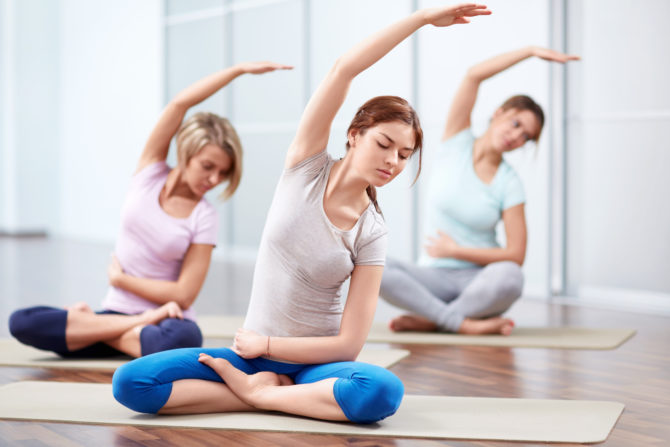Overview
Yoga is a physical and mental practice that involves the body, mind and spirit. The practice, which originated in India, is designed to enhance awareness, create a mind-body-spirit balance, cleanse, heal and strengthen the body, liberate the true self and, as practiced today, improve fitness. The most common form practiced in the United States is hatha yoga, which includes specific movements or postures (asana) and various breathing techniques (pranayama) and is often complimented with meditation (dhyana).
Yoga’s gentle, mindful and controlled movements can provide a non- or low-impact workout for people in almost any physical condition. Yogic exercises and there are many can ease tense muscles, improve flexibility and enhance strength, balance and endurance. Poses, breathing practices and meditation can also increase concentration, reduce stress and, among other therapeutic benefits, relieve back pain.
No one seems quite sure when yoga began, but it goes back thousands of years. Stone carvings in the Indus Valley depicting yoga positions date back 5,000-plus years. Traditionally, yoga was a spiritual practice, its goal being union with the absolute or the divine. The various exercises we associate with hatha yoga were performed to prepare the body for long periods of meditation.
The word “yoga” means to join or bind together, and the practice joins together the body, mind and spirit. On a spiritual level, it can refer to the union of the individual with the absolute truth or true self (Atman). It’s often associated with Hinduism, but yoga predates the religion. Hinduism has incorporated elements of yoga into its practices, as have other religions.
As it’s typically practiced in the West, the focus of yoga is more on the physical fitness aspects. Of course, it can be a spiritual experience, if you choose to use it as such. Yoga is now practiced around the world for its psychological, physical and spiritual benefits.
Americans have practiced it for more than 100 years, but it gained popularity in the 1960s as young people developed a taste for all things Eastern. According to results of a 2012 survey conducted by Sports Marketing Surveys USA on behalf of Yoga Journal, 20.4 million Americans, or 8.7 percent of U.S. adults, are believed to practice yoga.
Although this report focuses on hatha, here are some other traditional types of yoga:
Raja:
Called the “royal road,” its focus is primarily on meditation; it incorporates exercise and breathing practice with meditation and study.
Jnana:
Called the path of knowledge or wisdom, it is the path of yoga that uses the mind to get beyond the mind by asking questions such as, “Who am I?” “What is reality?” and “What is permanent and unchanging?
Bhakti:
The path of love and devotion focuses on devotion to and concentration on the guru or chosen deity and often includes chanting.
Karma:
In the yogic system of action and service, everything (including the yoga postures) is done with the mind centered on the divine; activities are done selflessly for the greater good.
Tantra:
The path of ritual, it’s based on the principle of consciously embracing the whole of life to unite with deity. It uses the energies of the body including sexual Read More...













No comments:
Post a Comment